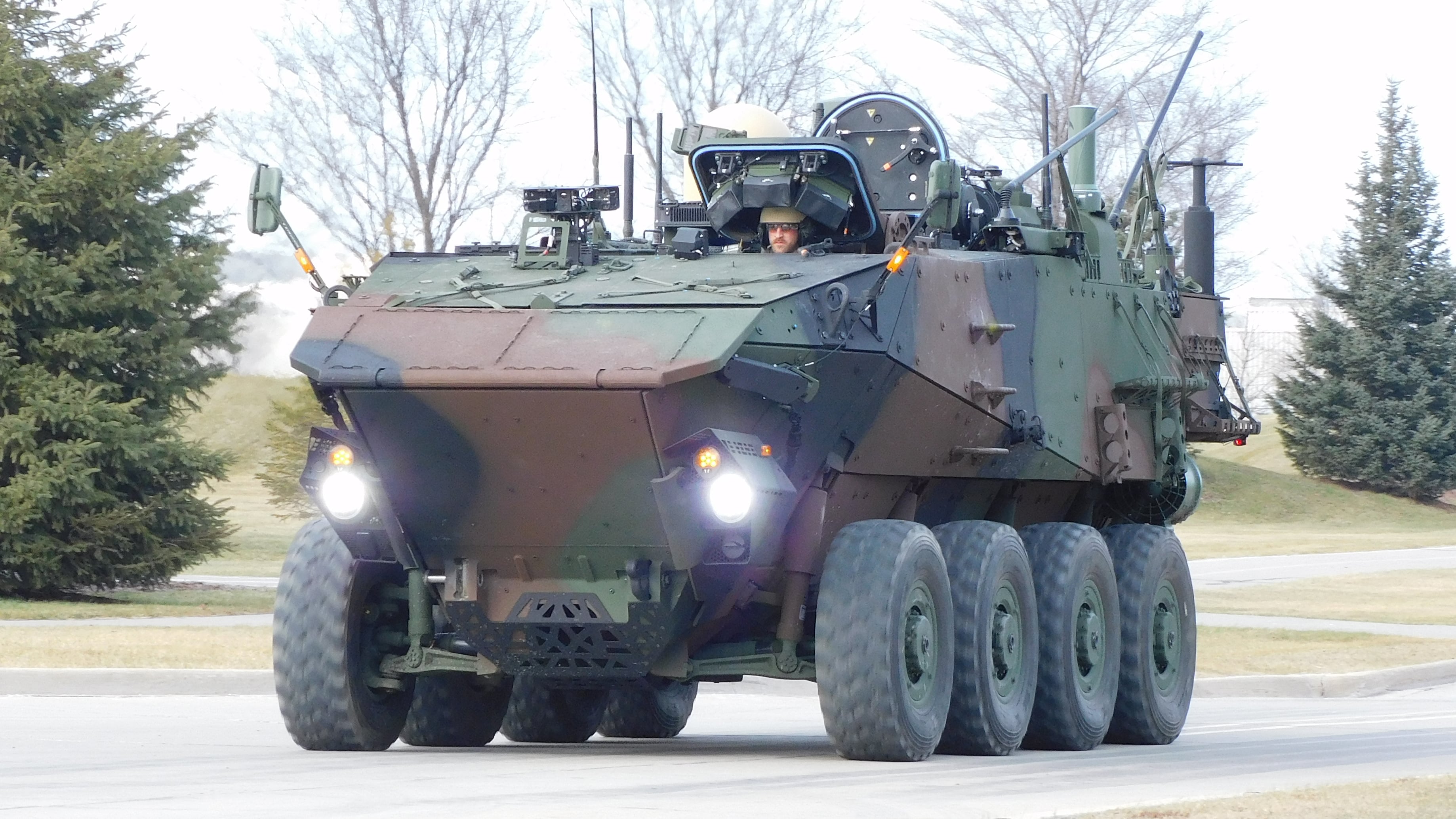WASHINGTON — The U.S. Marine Corps is one step closer to replacing its aging light armored vehicles, with the final prototype in the Advanced Reconnaissance Vehicle competition now in Marine Corps custody.
Three companies are vying to build the ARV, which will replace the 1980s-era LAVs before they leave the service in the 2030s.
The Marine Corps has previously struggled to design an LAV replacement, but the ongoing Force Design 2030 modernization has helped clarify the role of the ARV and the tools it needs. Last year, the service awarded competitive prototyping contracts to Textron and General Dynamics Land Systems, and both companies have now turned their vehicles in for testing that’ll span the first half of 2023.
BAE Systems has worked with the Marines since April under a modification to its contract for the Amphibious Combat Vehicle. The company has integrated the Marines’ suite of command, control, communications, computer and unmanned aerial system (C4/UAS) systems onto the ACV to offer another potential LAV replacement.
Here’s a closer look at the three companies’ offerings:
General Dynamics Land Systems
General Dynamics Land Systems is the only company to participate in both the 2019 science and technology demonstrator phase and the competitive prototyping phase, and it pitches its vehicle as using proven components from other programs in its portfolio.
Phil Skuta, GDLS’s Marine Corps and Navy business development director, told Defense News the company’s prototype draws on investments the company has made in three areas: the Katalyst advanced electronic architecture, artificial intelligence capability, and autonomy and robotics.
General Dynamics Land Systems first built a prototype vehicle in 2017 using its own money, Skuta said. It worked under the S&T contract from 2019 to 2021, he said, and on Dec. 23 turned in a prototype vehicle under the current contract.

During that time, he said, the Marines’ have changed their focus from kinetic lethality to enhanced surveillance capability and the ability to view and contribute to a common battlefield picture. The swim capability for the vehicle is more robust under the current contract compared to the S&T contract, Skuta said — asking for ocean swim capability rather than the legacy LAV’s riverine capabilities to reflect the Marines’ evolved plans for how they will use the vehicle. He said General Dynamics has ensured its offering has kept up with these changes to fully meet the current requirements.
Skuta added that, between building the S&T demonstrator and the prototype, General Dynamics Land Systems sought to increase the commonality in systems and components between its ARV proposal and other vehicles it’s currently building, including the Army’s mobile protected firepower program.
Textron
Textron touts its Cottonmouth ARV as a clean-sheet design crafted with the Marines’ current and future needs in mind.
The company did not participate in the S&T demonstrator, but Textron was tracking the Marines’ evolving vision for ARV and built an “alpha prototype” using internal research and development dollars, David Phillips, Textron Systems’ senior vice president of land and sea systems, told Defense News.
Textron sent the alpha prototype to the Nevada Automotive Test Center early on for performance, durability and reliability data, and brought the vehicle back again after winning a contract with the Marine Corps in 2021.
Phillips said Textron used its work in other areas — including the landing craft air cushion it builds that will carry four ARVs from an amphibious ship to the shore, and unmanned systems that will be integrated with ARV to expand its reach — to inform Cottonmouth.
Throughout 2022, Textron has been refining its vehicle design, “realizing where we may have over-designed, realizing where we may have under-designed in the [alpha] prototype, and making those corrections,” Phillips said.
The company finished building the prototype in August and, after several months of contractor testing, turned it over to the Marine Corps Dec. 1 at NATC, according to company statements.
BAE Systems
BAE Systems did not participate in the ARV competitive prototyping phase but has a separate potential path to building the Marines’ next vehicle as the builder of the Amphibious Combat Vehicle.

Mark Brinkman, the director of Advanced Reconnaissance Vehicle for BAE, told Defense News the base chassis is already in production at the company’s York, Pa., plant.
Brinkman said BAE’s vehicle is larger than those of competitors and cannot fit four to a landing craft air cushion —but the company is pitching the Marines on a slightly different way to operate the ARVs. Rather than being moved on connectors like traditional Marine Corps ground vehicles, the ACV C4/UAS would swim from the ship.
The larger ACV would carry more capability per vehicle, allowing the Marines to consider using fewer vehicles to have the same recon/counter-recon reach, Brinkman said.
BAE has received two full-rate production contracts for ACV since being selected in 2018 for the program. It is building personnel and command variants, is designing a 30mm cannon variant and may design a recovery variant in the future.
Brinkman said an ACV was outfitted with the government-furnished systems and tested at NATC over the summer. It will now head to Camp Pendleton, Calif., for additional government testing in the first half of 2023 alongside the two other prototypes.
Megan Eckstein is the naval warfare reporter at Defense News. She has covered military news since 2009, with a focus on U.S. Navy and Marine Corps operations, acquisition programs and budgets. She has reported from four geographic fleets and is happiest when she’s filing stories from a ship. Megan is a University of Maryland alumna.









